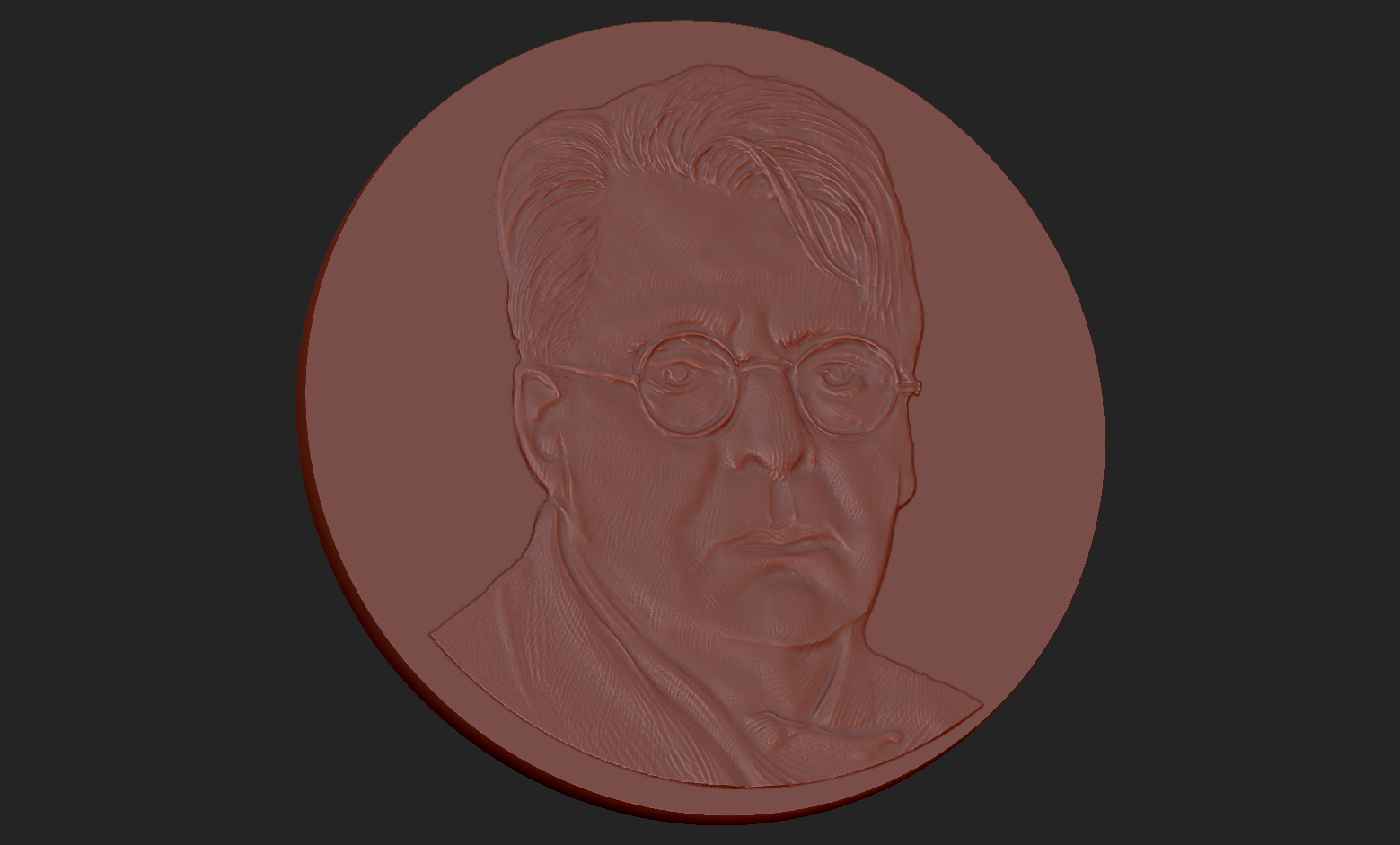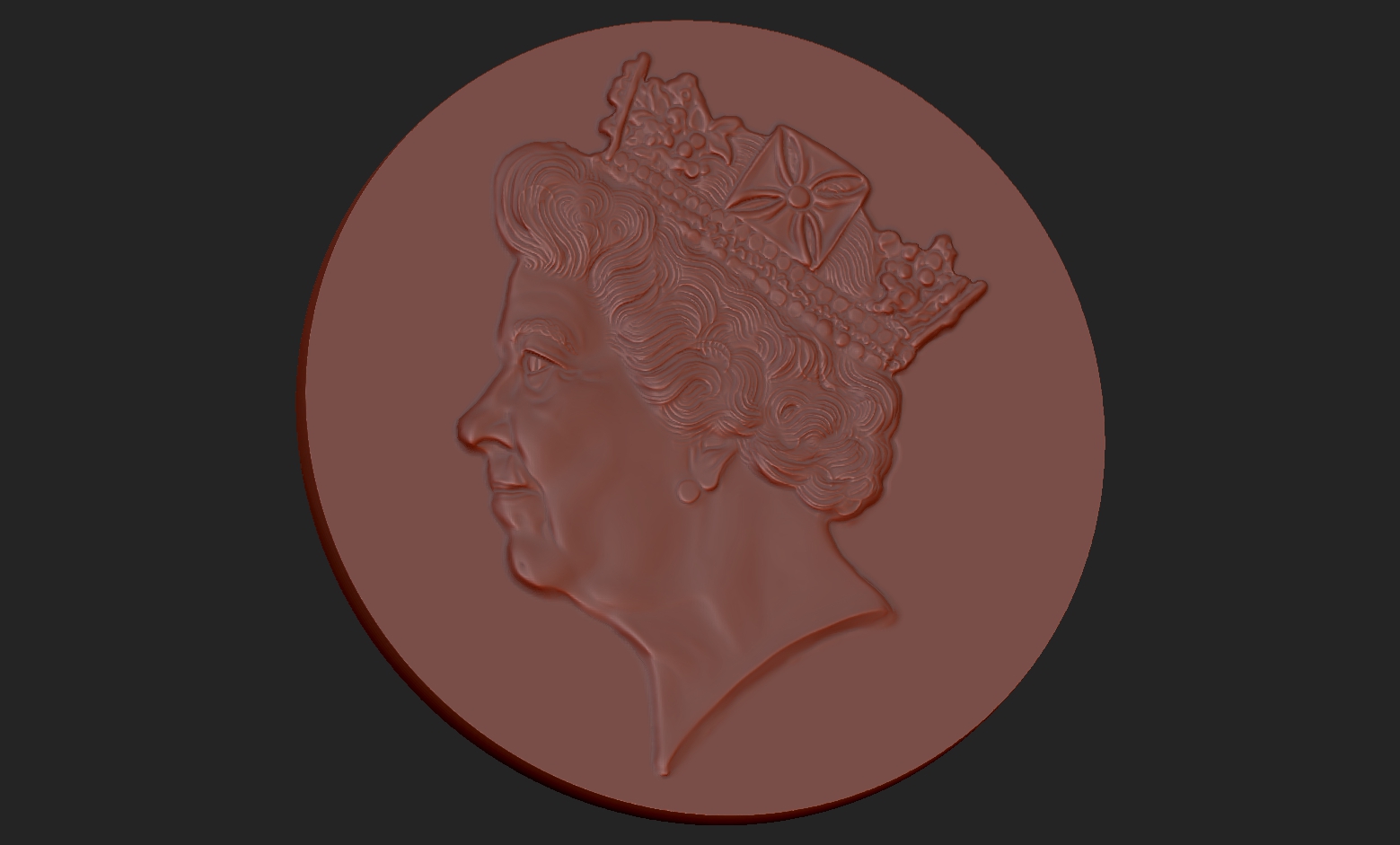Can anyone suggest a better way of doing this?..
I work in bas-relief, mainly for the coin and medal industry, so my models are very low, on a flat background.
I use a dynamesh disk as a base, which works fine, but I’m not satisfied with the results when I trim my models away from the background.
I’ve tried masking/ extracting, and masking/edge looping (then hiding and deleting hidden), but unless I push the model up to a really high poly count, I get unacceptable jagged edges - models are imported into Artcam for CNC tooling, and anything over a couple of million polys or so causes trouble. (I know that actually quite high, but the jagged edge from a trimmed 2.5 million poly model would show up on the tooling, and be rejected. To give you an idea of scale, the models shown below would be engraved at about 30mm diameter, with a relief height of about 0.2mm - 0.3mm.
Masking by hand also tends to mean that I get small ‘gaps’ where the mask has clipped the bevel between the model and the background. These gaps get automatically filled in with flat planes when the model is imported into Artcam.
Expanding the mask to ensure that I don’t clip the bevel just leaves me with a thin flat border around the model, which is actually harder to remove than the full background.
I’ve also tried masking by cavity and peaks/troughs, but can’t get a decent result.
Can anyone suggest a better method for isolating and removing the model from the background, or tell me where I’m going wrong?
I’m not a comprehensive ZB expert - I learned the tools as I learned my specific processes, so I may be missing some useful functions.
I also have access to Modo, if that’s any help.
Many thank for any suggestions.
Pics attached to show what I mean
Attachments









 .Whatever works best for your needs. I just thought it might get you think along the lines of creating the relief as a separate object to begin with, if you’re going to need a super clean separation.
.Whatever works best for your needs. I just thought it might get you think along the lines of creating the relief as a separate object to begin with, if you’re going to need a super clean separation.

